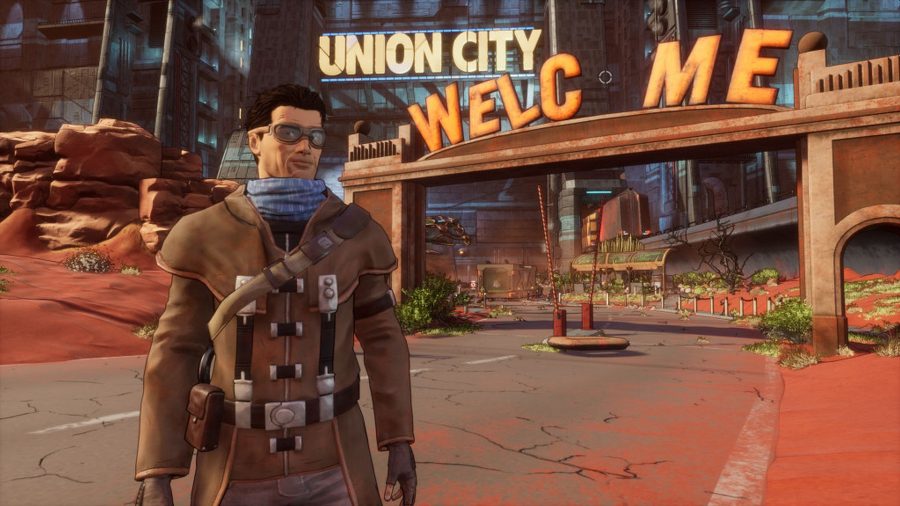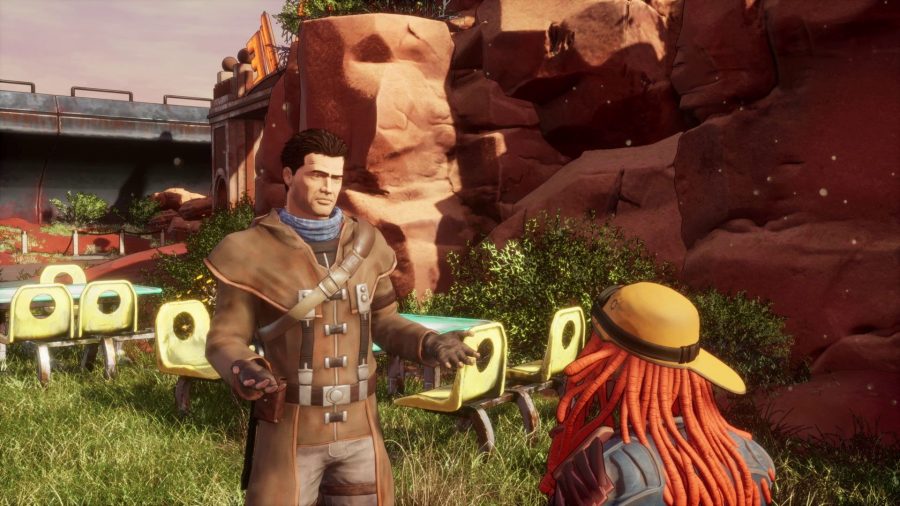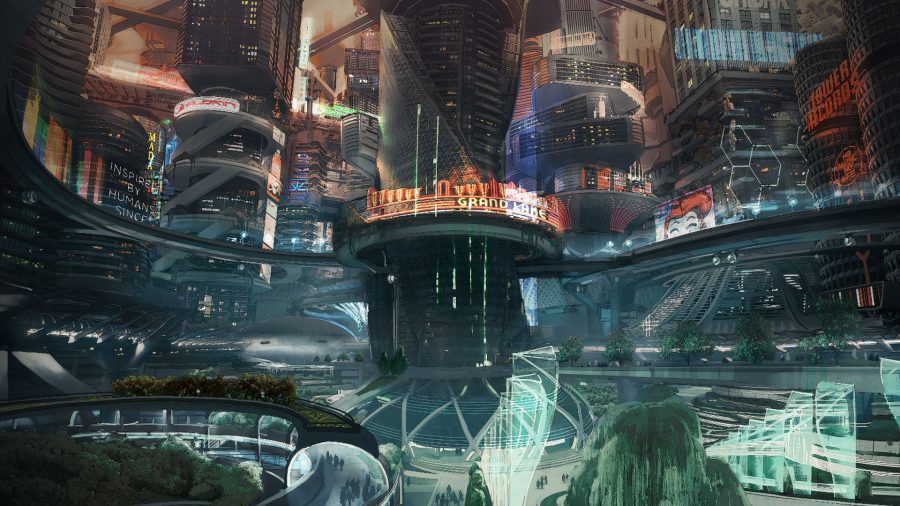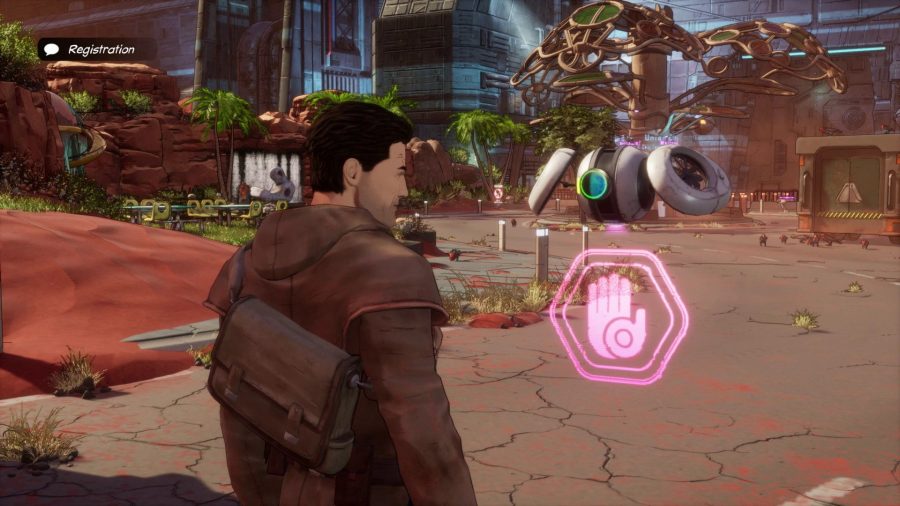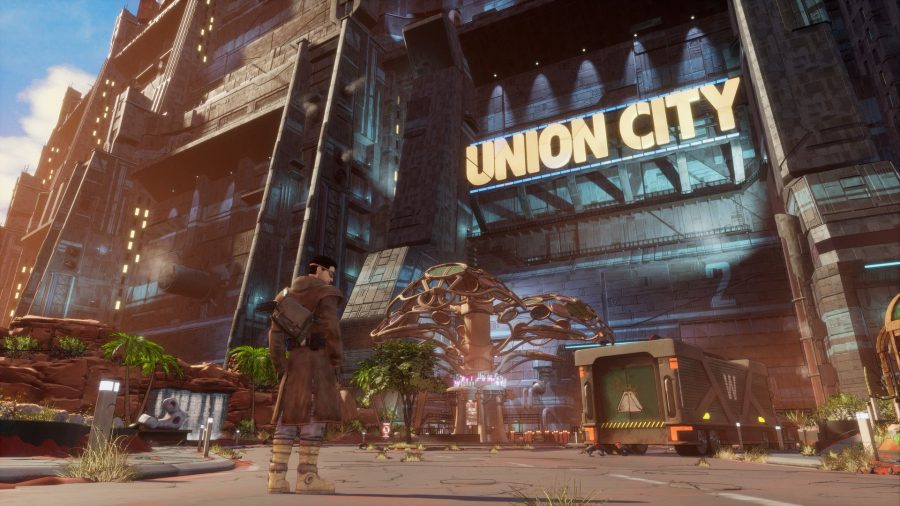Boleskine
Arcane
- Joined
- Sep 12, 2013
- Messages
- 4,045
https://adventuregamers.com/articles/view/40133
Beyond a Steel Sky hands-on preview
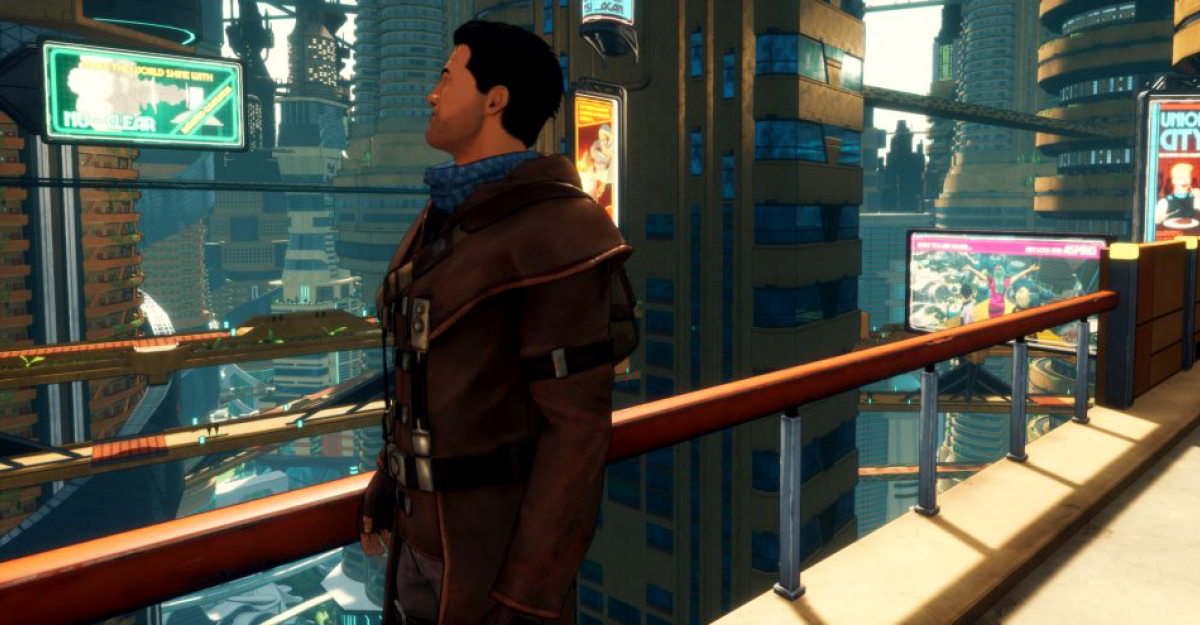
Written by
Laura Cress — April 15, 2020
Returning to Beyond a Steel Sky after my brief demonstration with Revolution's CEO Charles Cecil at last year's gamescom (which now seems like a lifetime ago), I was looking forward to finding out what more Union City and its colourful cast of reprobates and robots had to offer. At the start of this sequel to the 1994 sci-fi point-and-click adventure classic Beneath a Steel Sky, it's clear that returning protagonist Robert Foster doesn't share my intrigue – he'd pretty much rather be anywhere else than back in the place he spent much of his time trying to escape last time. But the main part of my playthrough put me in control of Foster on the outskirts of the city trying to find a way past the gate back in.
As with its prequel, Beyond presents Foster's current predicament using the beautiful comic book panel stylings of award-winning Watchmen artist Dave Gibbons. The intro does a good job of summing up Foster's past for anyone who hasn't yet given the now-free Beneath their time (or has simply forgotten in the ensuing 26 years). Foster's still a nomad, travelling from tribe to tribe in the desert scrubland outside of Union City, called The Gap. Of course, all that changes very quickly when a group of masked strangers burst up from the ground in a strange bipedal machine and in the attack they take Milo, one of the current camp's children, with them. It's up to Foster to track the gang down and get Milo back, and unsurprisingly, it soon becomes clear that all roads, and answers, lead to Union City.
Unlike its predecessor, Beyond will be completely 3D with characters and backdrops that have a cel-shaded comic book feel, in a similar vein to Telltale's The Wolf Among Us, if with a less noir-styled, slightly brighter palette. Some have bemoaned Revolution's decision to change Beneath's 2D graphics, but stepping into the busy arena outside the city proper, I was struck by how much freedom 3D allowed life to take its course. Characters move around even more freely, birds fly overhead, and nearly everything is an object that can be used or examined in some way. There's always a danger with 3D that areas are so open that vital objects or puzzle clues are easy to miss, but there seemed to be just about enough clear signposting in my demo to make it obvious where I should be exploring.
Moving Foster is a case of using the WASD keys and mouse for the camera, pressing Shift to run. (A gamepad option seems likely, as this game is coming to consoles as well, but I wasn’t able to test this on PC.) There is no key to highlight hotspots in the area, but when in close proximity to something interactive, an option will flash up for you to engage with it or use an item from your inventory on it. This works well enough in practice, though it does mean you have to be right in front of an object you want to interact with, which feels a little bit clunky sometimes when using the WASD keys. As for the camera itself, mercifully it moves pretty freely along with you, never making it feel like you're having to fight it to show what you want to see. Running around the Union City outskirts, I was struck by how high you could look up the intimidating walls, all the way to the cloudy sky overhead.
The new aesthetic plays right into Revolution's Virtual Theatre idea. First used in their games back in the '90s, it sees every character moving about with their own motivations and paths, which you'll need to manipulate to progress. The added flexibility afforded by 3D obviously is much better suited to this concept, in that there's much more space both vertically and horizontally for characters to roam around in. I didn't really find myself using this conceit for problem solving during the demo; instead it more meant I was often running after or trying to find characters to trigger a new branch of dialogue. But according to Charles, it will feed into puzzles more organically in other areas of Beyond, alongside making everything seem more open and alive.
One updated system for puzzling will see you able to hack into certain computers or devices (similar to LINC in Beneath) using a special scanner and swap “logic nodes” to pretty much make computers do as you wish. For example, if a bridge requires a type of key card or chip to allow you to pass, but you don't have that pass, you can swap the two blocks of “grant access” and “access denied” around, so that now NOT having a key card means you're allowed in. It's a really cool idea that I'm hoping gets used more in the full game as there were only a few simple examples of it in the demo. Fingers crossed this will add a new dimension to gameplay alongside dialogue and inventory solutions.
Another nice feature I noticed was a hint system, not dissimilar to the kind used by Revolution in the recent Broken Sword. It seems there'll be a “cool down” restriction, whereby after asking for one hint you'll have to wait at least two minutes before you can ask for the next one. It's a nice idea to encourage people to only turn to help when needed, while still offering the chance to solve the issue yourself without having the complete solution spelled out.
Everyone here will be voiced, and there's a large cast to meet in your first few encounters back in and around Union City, from Ember, a sassy scavenger; to Chipsworth, a robotic butler. Foster's voice actor (different from Beneath's CD-ROM version) lends the character some much needed grizzled gravitas thanks to all of his time spent out in the bush. Dialogue options (shown on-screen as text) will update themselves with a green arrow once you've unlocked something more to speak about; otherwise they’ll be highlighted in yellow for options relating directly to objectives, or blue for additional dialogue lines. The writing feels snappy for the most part, aside from one strange meeting with an Irish woman that came off as stilted and artificial – let's just say that Foster is best at leaving the comedy to others.
As well as the outskirts of Union City, which I'd seen previously, I got to venture inside a little bit as well. Speaking of comic relief, after Foster left, his robot pal Joey took charge with the aim of transforming it into a utopia. Whilst he appears to have improved much in the ensuing years, Joey's now nowhere to be seen, with the City instead ruled by the Council, a group of rather autocratic Nineteen Eighty-Four-sounding ministers more interested in controlling the population than improving it.
Having managed to gain access to the city by swapping another person's ID chip for my own, I headed back to my “new” (read: the other guy's) apartment, only to find a member of the Ministry of Welfare on my doorstep inquiring as to why I had been absent from work for so long. This challenged me with finding out as much as I could about the identity of Foster's accidental benefactor to try convincing the Minister that I was him, which required some snooping around the apartment to discover a bit about his hobbies and where he worked. It was then time to be quizzed by the Minister, which included an amusing section of having to interpret the mimed actions of my alter ego's wife standing behind the inquisitor to guess some extra answers in a nice demonstration that Revolution's sense of fun is well and truly intact.
It's clear there's still some fine-tuning needed before the release of Beyond a Steel Sky, with the odd bug remaining here and there, though nothing too unexpected at this stage. Mainly, though, there's great promise in the prospect of being able to go anywhere and ostensibly do anything within reason in a free-form way, and I'm left feeling hopeful that Revolution will be able to harness that potential and use it to enhance the traditional adventure game fare. At the very least the intriguing plot, eclectic cast of characters old and new, and Dave Gibbons' comic book art should make for a memorable trip back to Union City.
Last edited by a moderator:






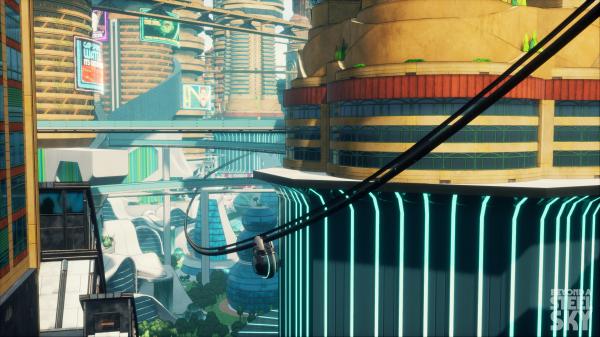
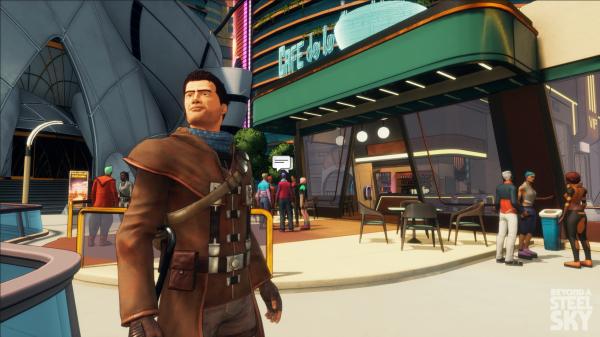

















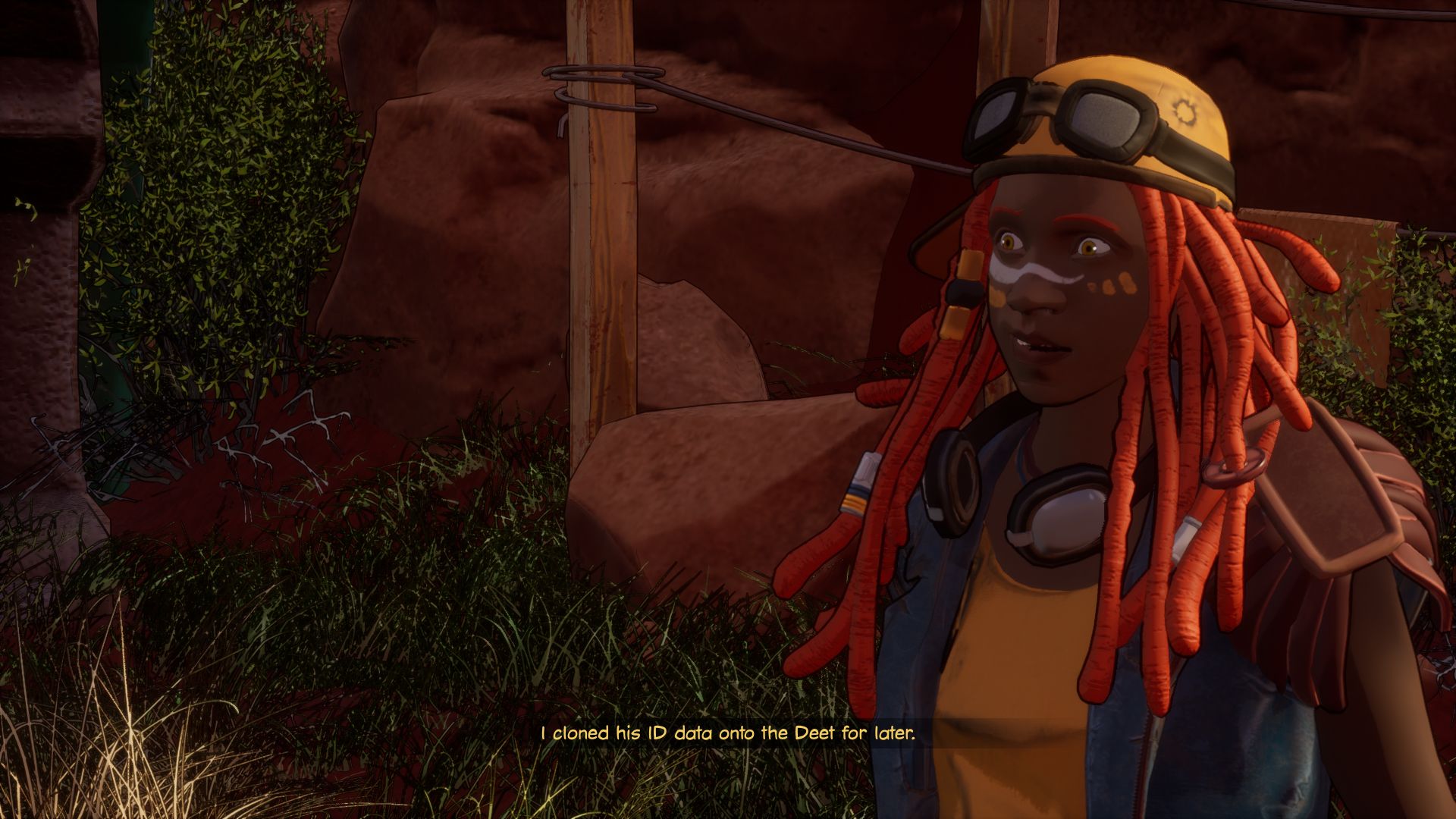

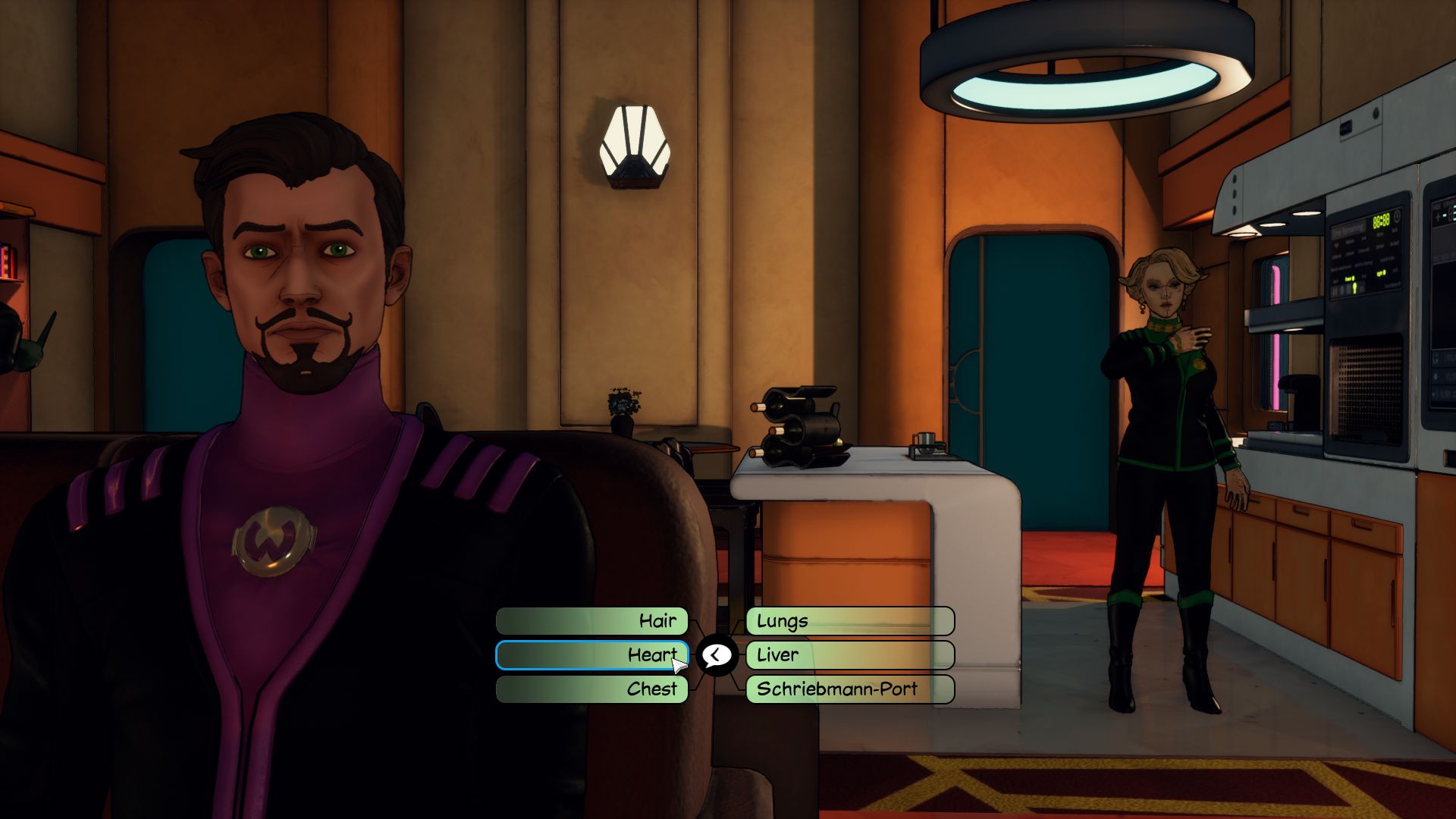
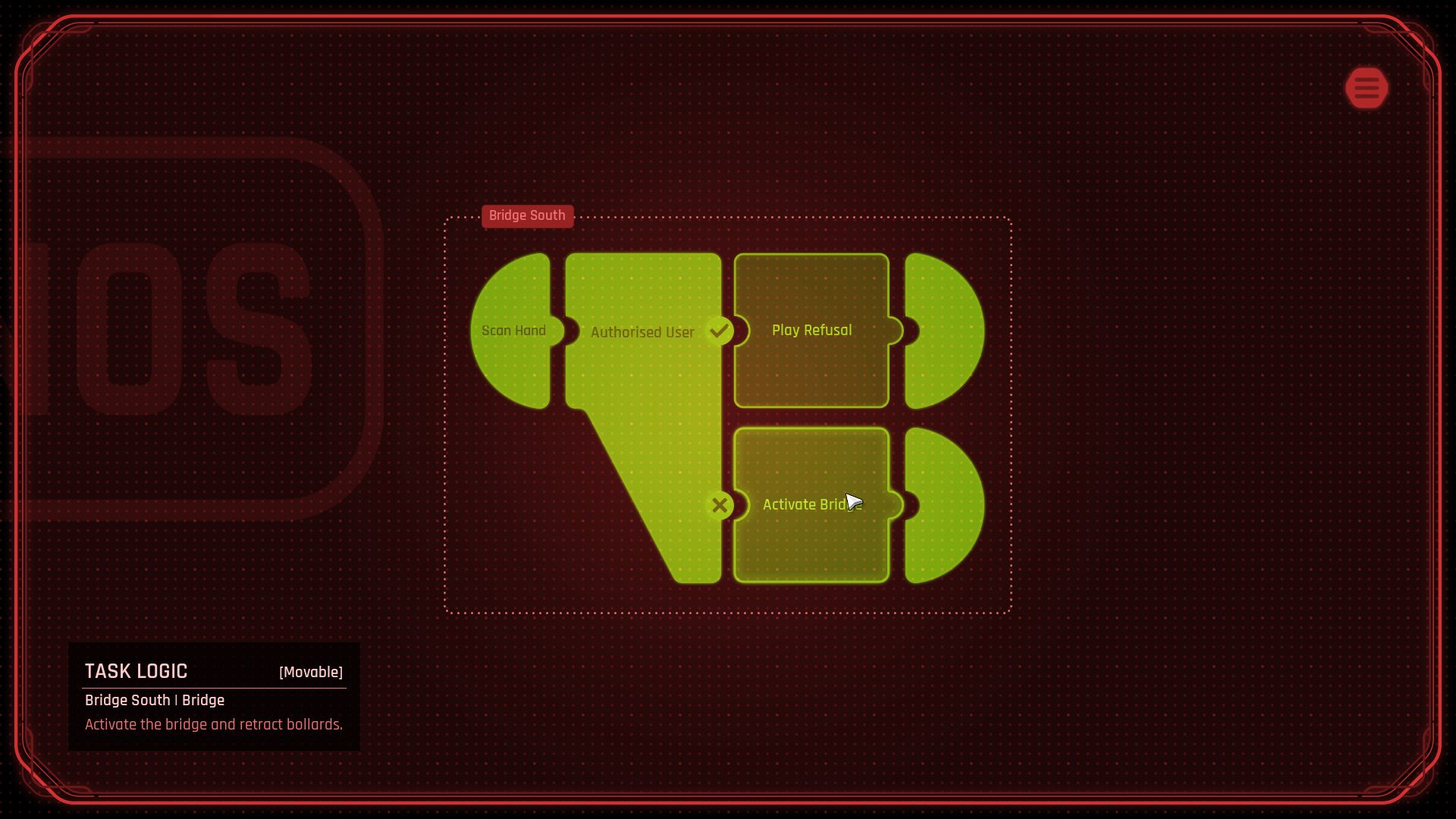

![Glory to Codexia! [2012] Codex 2012](/forums/smiles/campaign_tags/campaign_slushfund2012.png)





